Abstract
Excitability (action potential and refractory period) has been described by A. Finkelstein in the depolarizing region of the current-voltage (I-V) curve of the isolated frog skin. Recently Fishman and Macey interpreted this phenomenon as a consequence of a region with negative resistance that confers to the I-V curve an N shape. We have studied the I-V relation of the isolated frog skin in the hyperpolarizing region with a current-ramp system. It was found that in Na2SO4 Ringer's, the resistance continuously increases in the hyperpolarizing direction. When hyperpolarization reaches 300 mv an electrical breakdown occurs, occasionally followed by a region of negative resistance. In NaCl Ringer's the breakdown was also found although the I-V relation was reasonably linear. Unidirectional Na+ outflux was measured at different levels of voltage clamping across the skin and with different Na+ concentrations in the solutions. The Na+ outflux was found to be relatively independent of these parameters. Based on these results a Na+ rectifying structure is postulated. An electrical model for active Na+ transport including a diode and an oscillator is proposed. The effects of CO2, nitrogen, amiloride, and ouabain on the I-V relation are described.
Full text
PDF



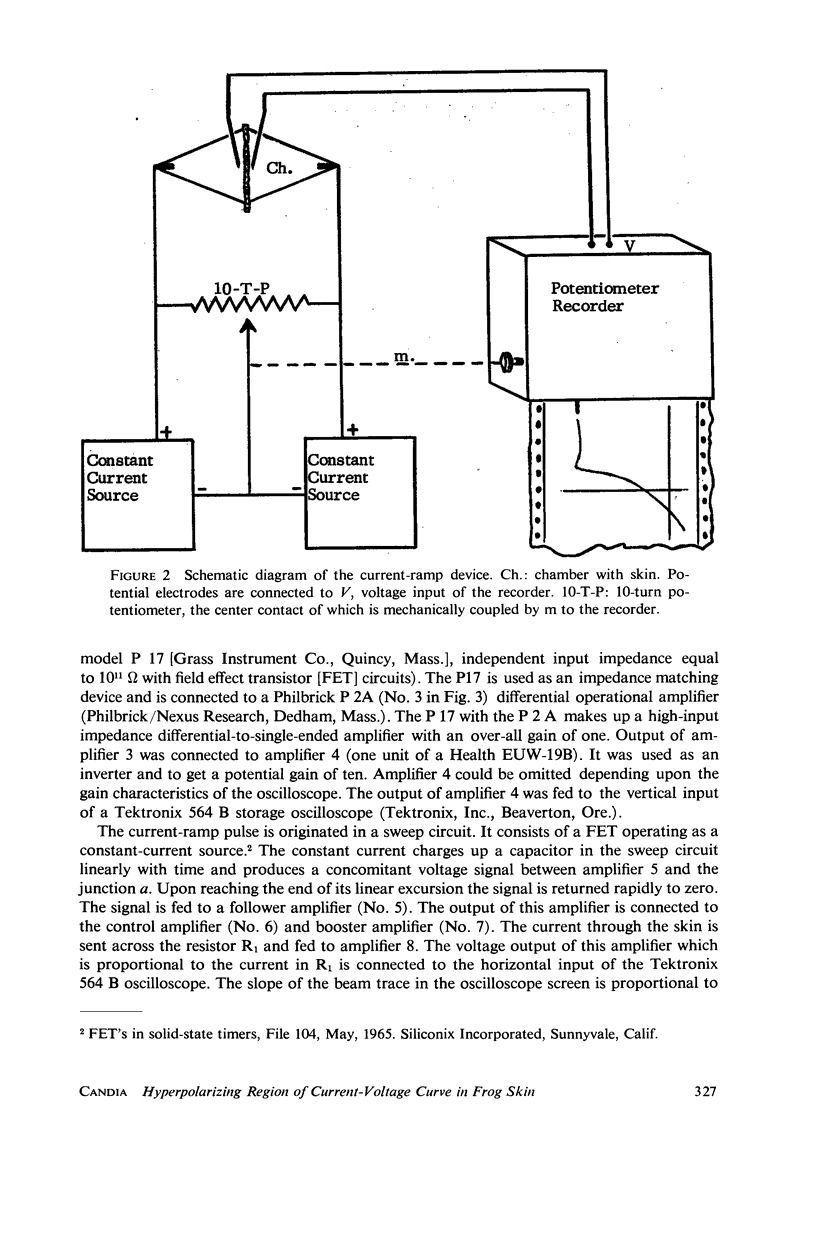
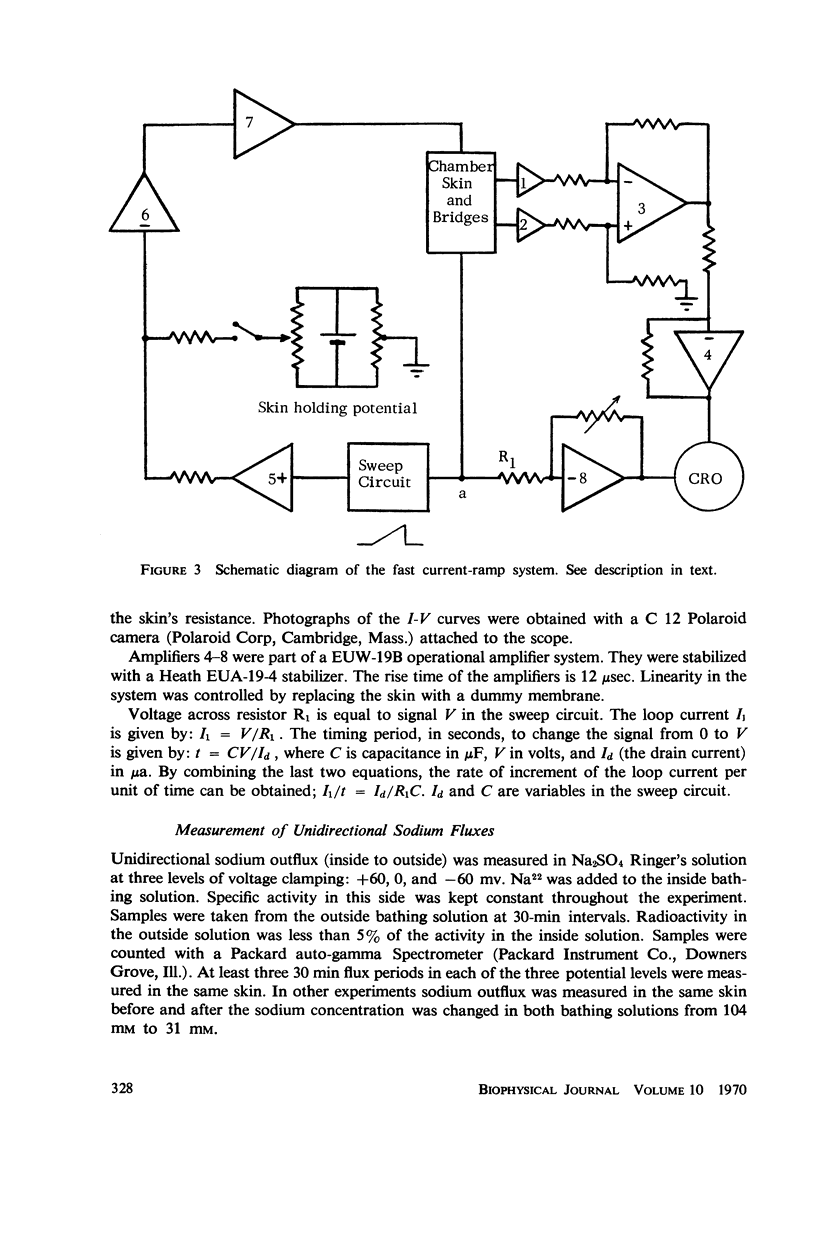
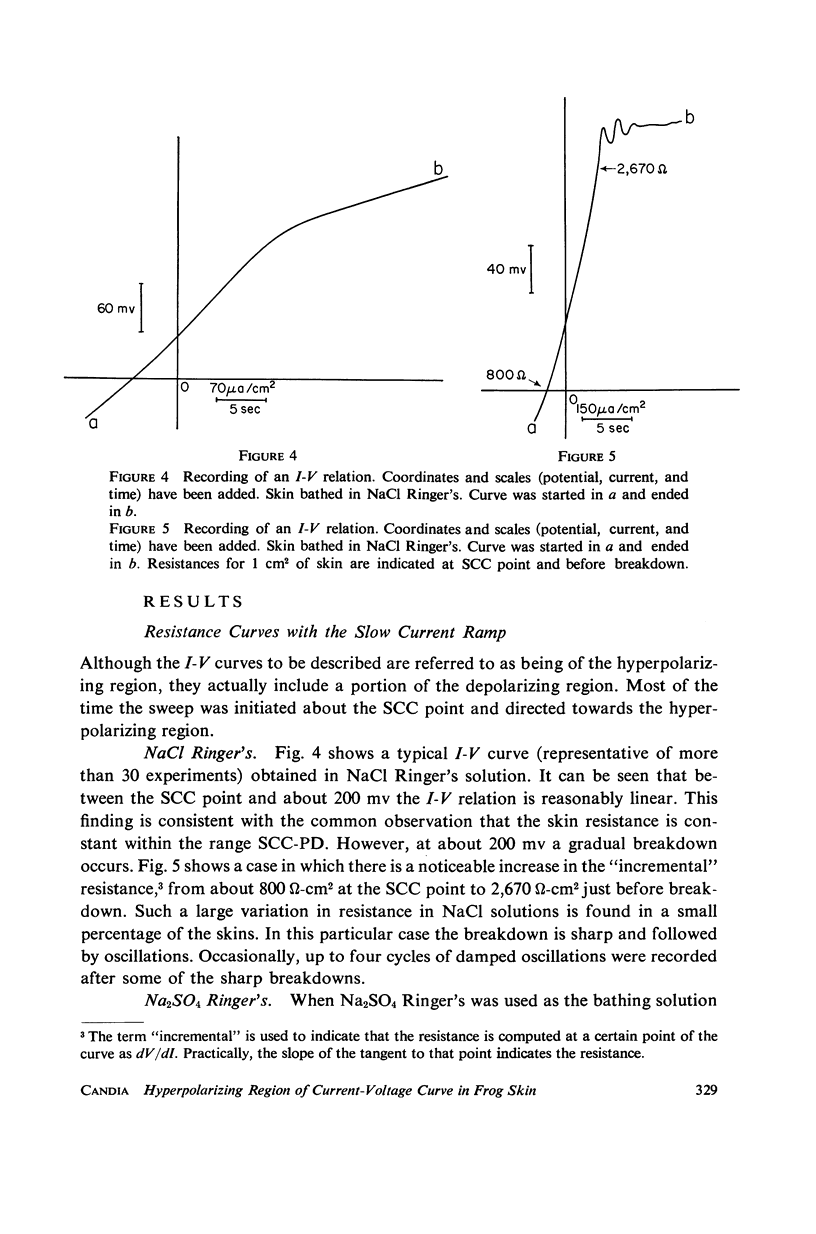




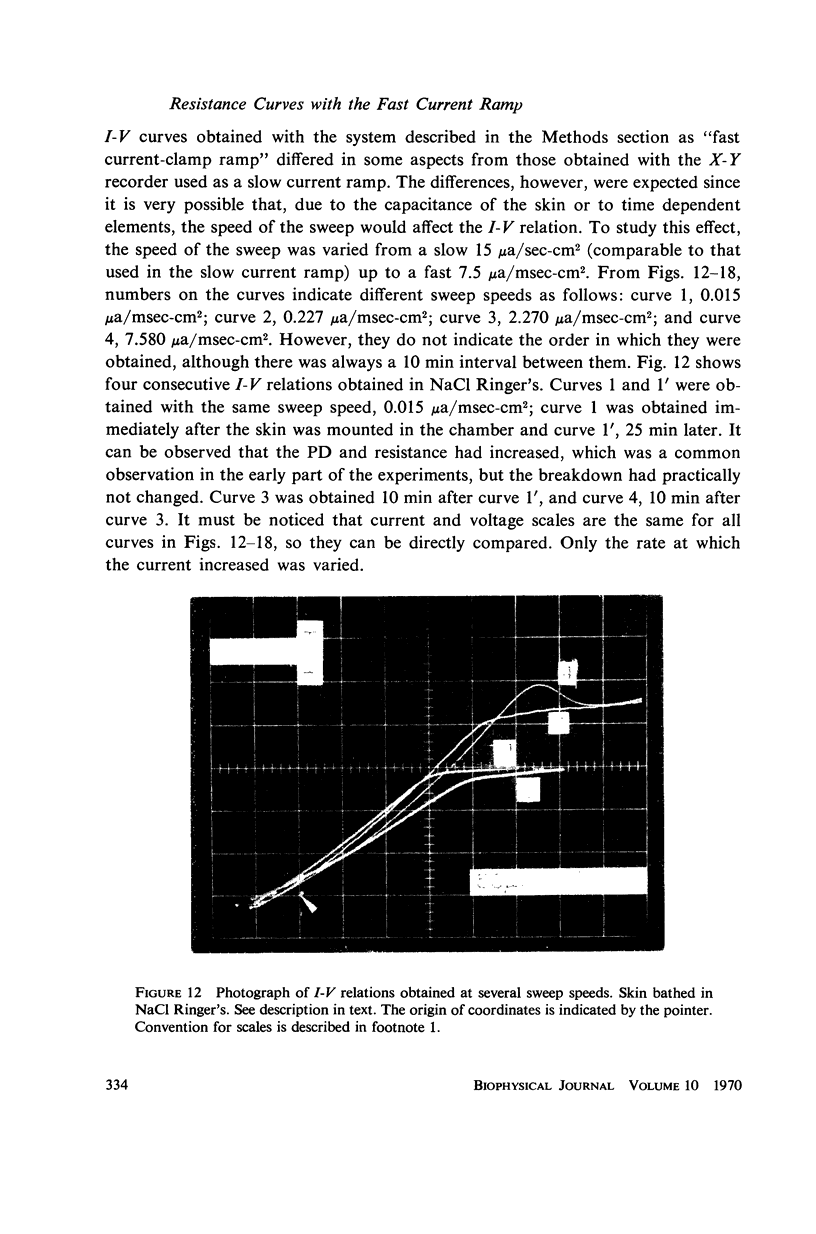


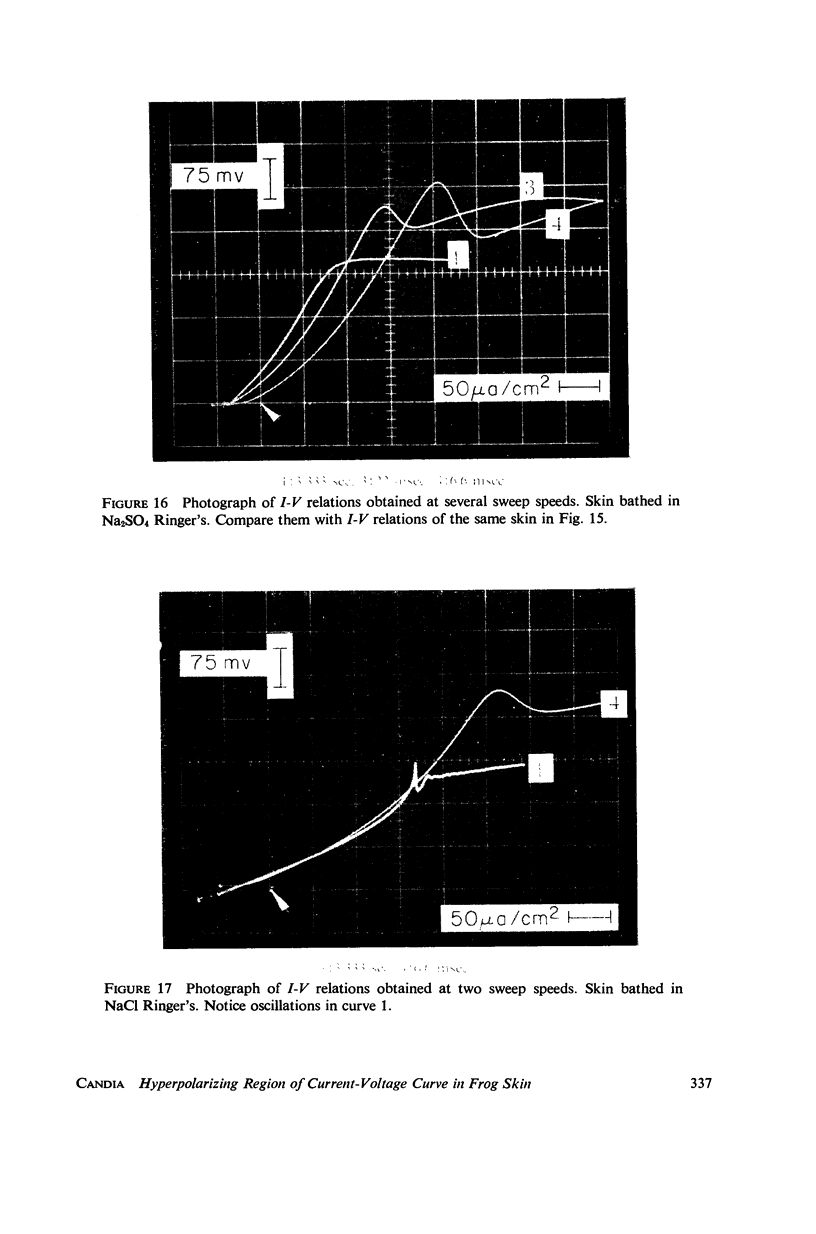
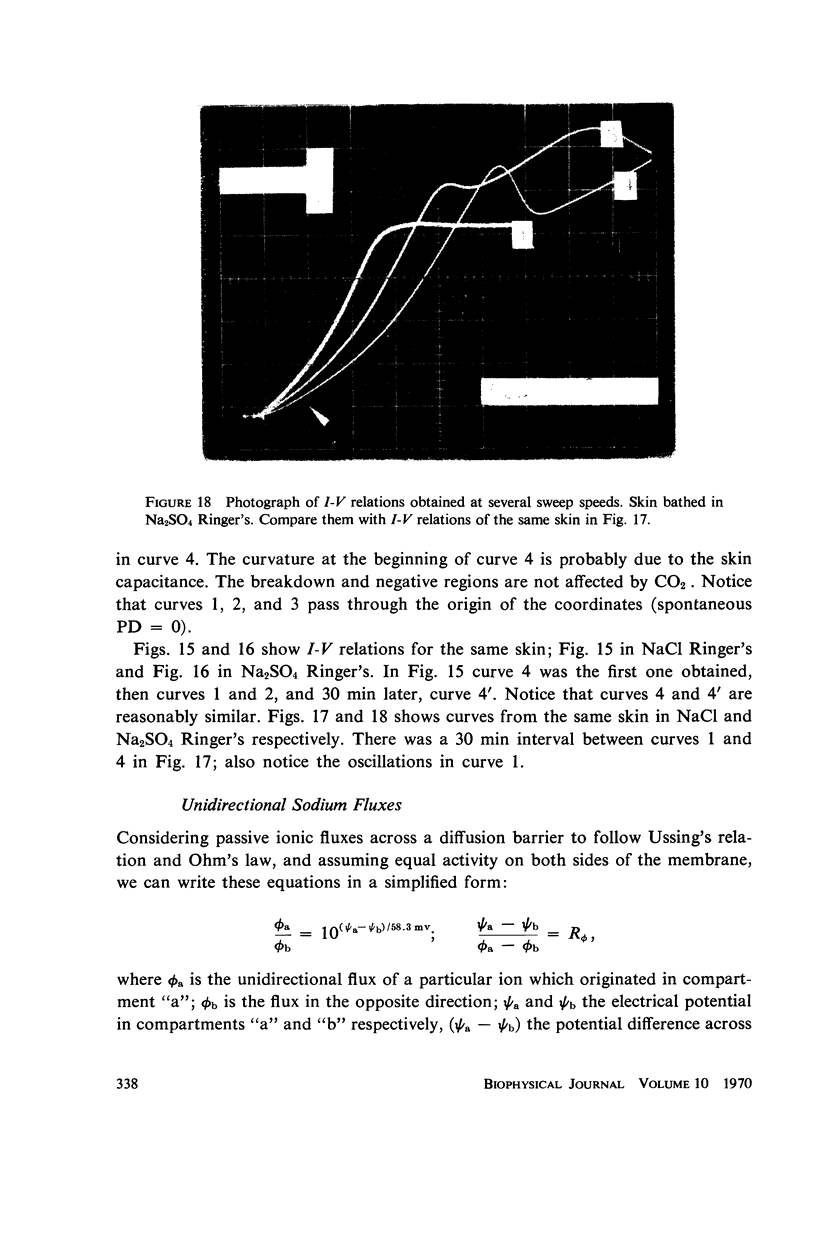

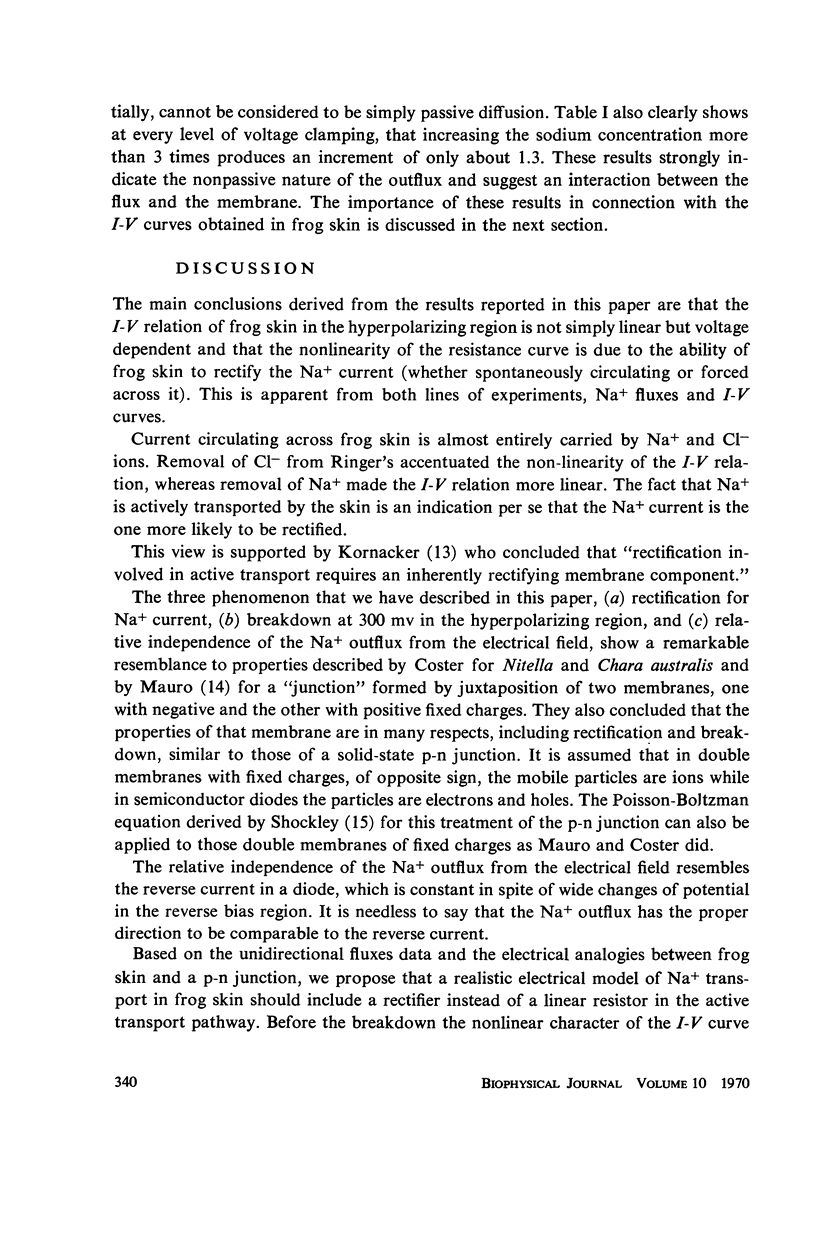
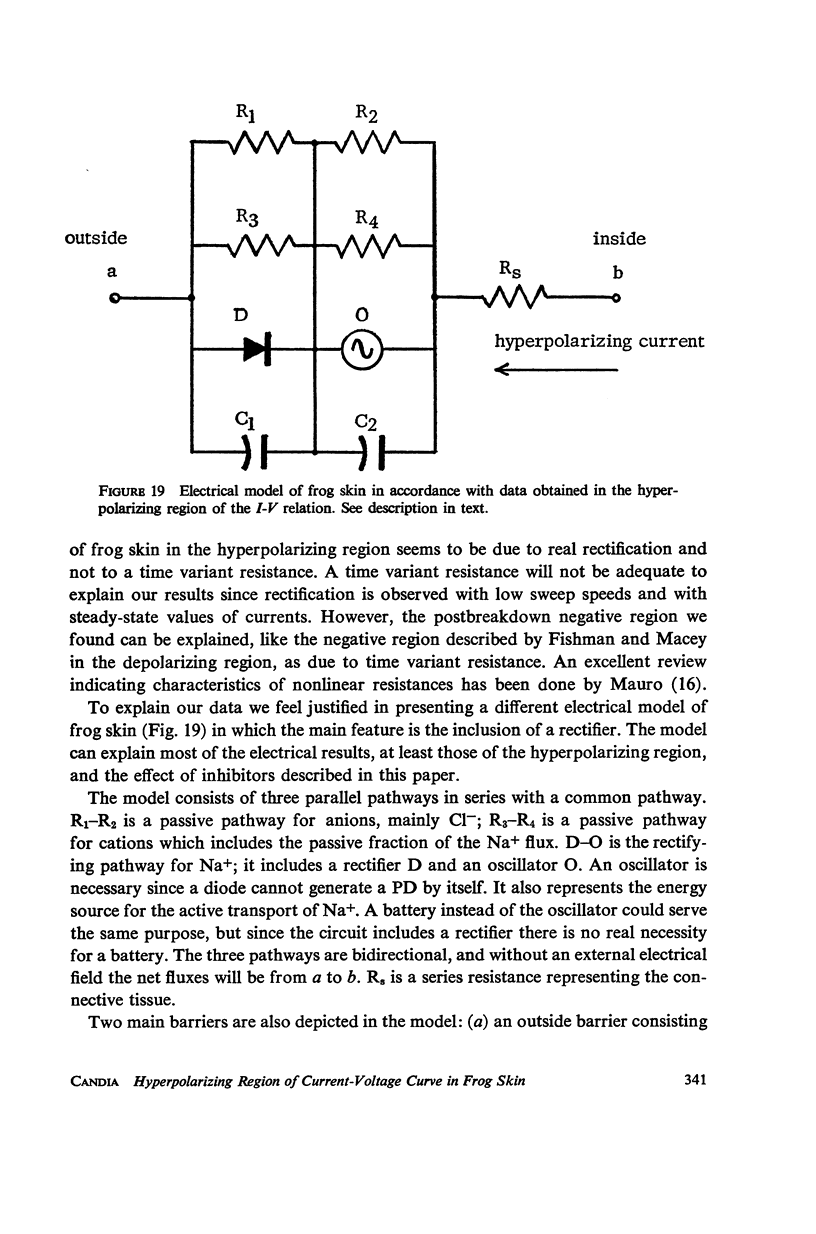

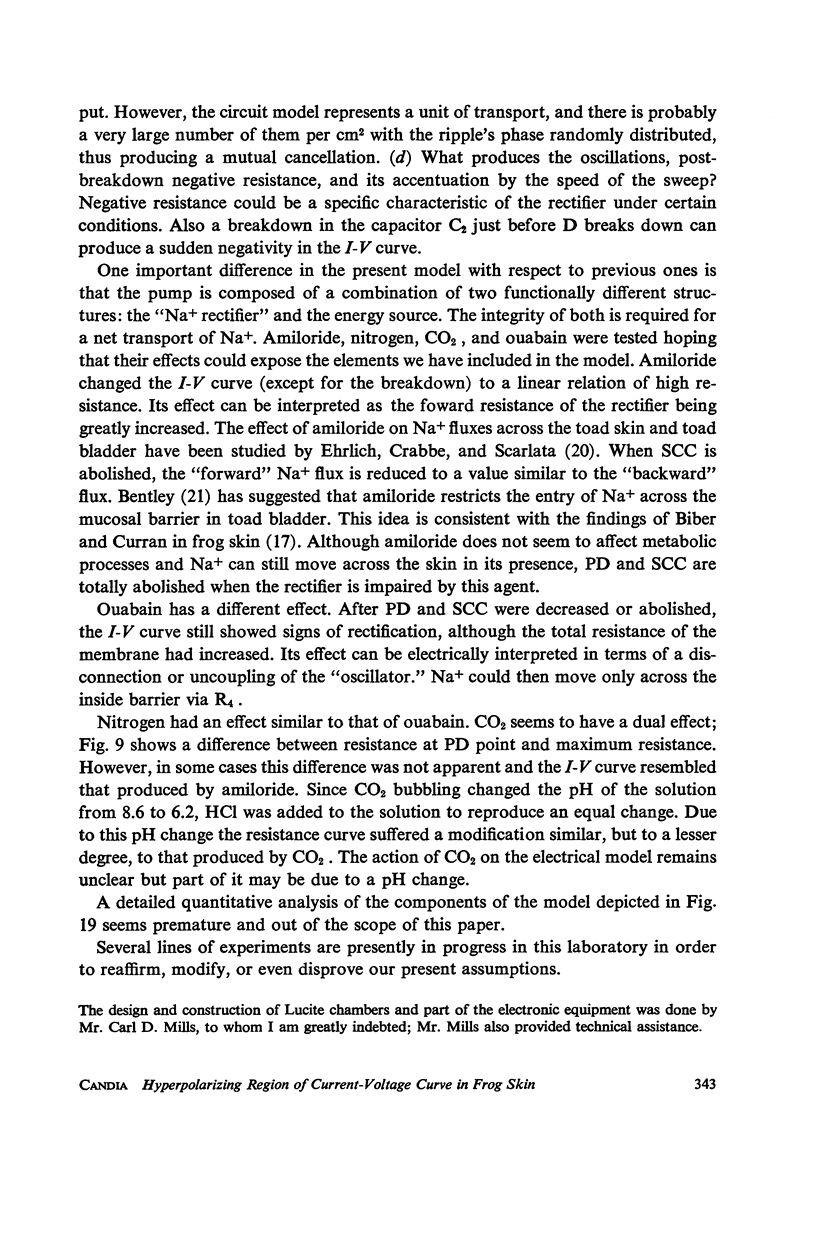

Images in this article
Selected References
These references are in PubMed. This may not be the complete list of references from this article.
- Bentley P. J. Amiloride: a potent inhibitor of sodium transport across the toad bladder. J Physiol. 1968 Mar;195(2):317–330. doi: 10.1113/jphysiol.1968.sp008460. [DOI] [PMC free article] [PubMed] [Google Scholar]
- Blumenthal R., Caplan S. R., Kedem O. The coupling of an enzymatic reaction to transmembrane flow of electric current in a synthetic "active transport" system. Biophys J. 2008 Dec 31;7(6):735–757. doi: 10.1016/S0006-3495(67)86620-7. [DOI] [PMC free article] [PubMed] [Google Scholar]
- Brown A. C., Kastella K. G. The AC impedance of frog skin and its relation to active transport. Biophys J. 1965 Jul;5(4):591–606. doi: 10.1016/S0006-3495(65)86736-4. [DOI] [PMC free article] [PubMed] [Google Scholar]
- Bueno E. J., Corchs L. Induced pacemaker activity on toad skin. J Gen Physiol. 1968 Jun;51(6):785–801. doi: 10.1085/jgp.51.6.785. [DOI] [PMC free article] [PubMed] [Google Scholar]
- Candia O. A. An automatic voltage clamp recorder for inexcitable membranes. IEEE Trans Biomed Eng. 1966 Oct;13(4):189–194. doi: 10.1109/tbme.1966.4502436. [DOI] [PubMed] [Google Scholar]
- Coster H. G. A quantitative analysis of the voltage-current relationships of fixed charge membranes and the associated property of "punch-through". Biophys J. 1965 Sep;5(5):669–686. doi: 10.1016/S0006-3495(65)86745-5. [DOI] [PMC free article] [PubMed] [Google Scholar]
- Ehrlich E. N., Crabbé J. The mechanism of action of amipramizide. Pflugers Arch. 1968;302(1):79–96. doi: 10.1007/BF00586783. [DOI] [PubMed] [Google Scholar]
- FINKELSTEIN A. ELECTRICAL EXCITABILITY OF ISOLATED FROG SKIN AND TOAD BLADDER. J Gen Physiol. 1964 Jan;47:545–565. doi: 10.1085/jgp.47.3.545. [DOI] [PMC free article] [PubMed] [Google Scholar]
- Fishman H. M., Macey R. I. Calcium effects in the electrical excitability of "split" frog skin. Biochim Biophys Acta. 1968 Apr 29;150(3):482–487. doi: 10.1016/0005-2736(68)90148-x. [DOI] [PubMed] [Google Scholar]
- Fishman H. M., Macey R. I. The N-shaped current-potential characteristic in frog skin. 3. Ionic dependence. Biophys J. 1969 Feb;9(2):151–162. doi: 10.1016/s0006-3495(69)86376-9. [DOI] [PMC free article] [PubMed] [Google Scholar]
- Fishman H. M., Macey R. I. The N-shaped current-potential characteristic in frog skin. I. Time development during step voltage clamp. Biophys J. 1969 Feb;9(2):127–139. doi: 10.1016/S0006-3495(69)86374-5. [DOI] [PMC free article] [PubMed] [Google Scholar]
- Fishman H. M., Macey R. I. The N-shaped current-potential characteristic in frog skin. II. Kinetic behavior during ramp voltage clamp. Biophys J. 1969 Feb;9(2):140–150. doi: 10.1016/S0006-3495(69)86375-7. [DOI] [PMC free article] [PubMed] [Google Scholar]
- Lindemann B., Thorns U. Fast potential spike of frog skin generated at the outer surface of the epithelium. Science. 1967 Dec 15;158(3807):1473–1477. doi: 10.1126/science.158.3807.1473. [DOI] [PubMed] [Google Scholar]
- MAURO A. Anomalous impedance, a phenomenological property of time-variant resistance. An analytic review. Biophys J. 1961 Mar;1:353–372. doi: 10.1016/s0006-3495(61)86894-x. [DOI] [PMC free article] [PubMed] [Google Scholar]
- Mauro A. Space Charge Regions in Fixed Charge Membranes and the Associated Property of Capacitance. Biophys J. 1962 Mar;2(2 Pt 1):179–198. doi: 10.1016/s0006-3495(62)86848-9. [DOI] [PMC free article] [PubMed] [Google Scholar]










